Theoretical physics of condensed matter is one of the most progressive parts of modern physics. The wealth of systems studied by condensed matter physics provides opportunities for fascinating physical phenomena and open new ways for technological innovations.
Superconducting nanohybrids
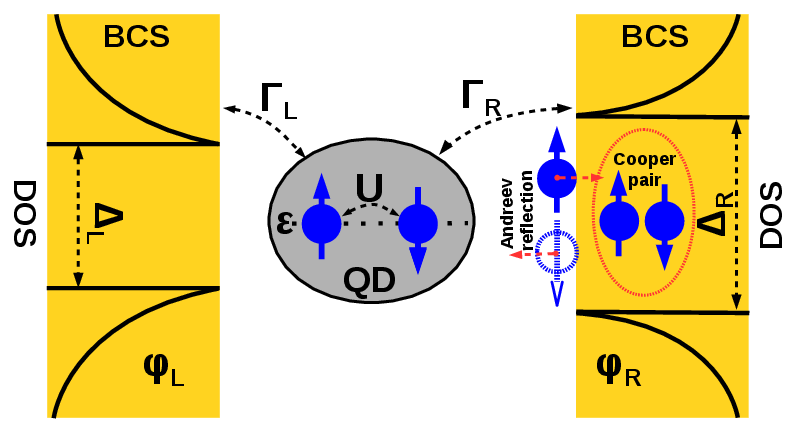 Classical phase transitions (e.g.
evaporation) are commonly encountered in extended thermodynamic systems.
Intriguingly, quantum mechanics offers ways to engineer so called
quantum phase transitions in tiny conducting islands called
quantum dots, which are attached to superconducting electrodes.
Classical phase transitions (e.g.
evaporation) are commonly encountered in extended thermodynamic systems.
Intriguingly, quantum mechanics offers ways to engineer so called
quantum phase transitions in tiny conducting islands called
quantum dots, which are attached to superconducting electrodes.
- A.
Kadlecová, M. Žonda, V. Pokorný and T. Novotný,
Practical guide to quantum phase transitions in quantum-dot-based tunable Josephson junctions,
Physical Review Applied 11, 044094 (2019)
Topological and 2D materials
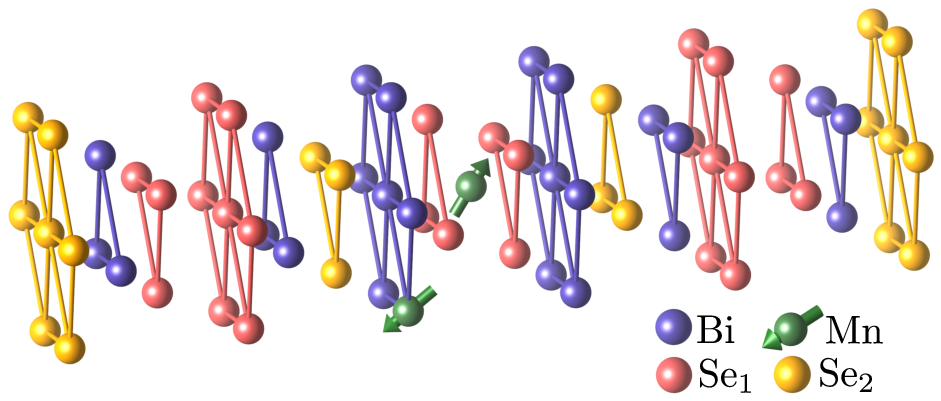 With advent of new materials and
technologies the quatum-relativistic effects in condesed matter
have become more important. An important manifestation of relativistic behaviour
in condensed matter is coupling of spin and orbital momenta, called
spin-orbit interaction. The latter drives certain materials
through a topological transition.
With advent of new materials and
technologies the quatum-relativistic effects in condesed matter
have become more important. An important manifestation of relativistic behaviour
in condensed matter is coupling of spin and orbital momenta, called
spin-orbit interaction. The latter drives certain materials
through a topological transition.
- Šebesta J., Carva K., Kriegner
D., Honolka J.,
Twin Domain Structure in Magnetically Doped Bi2Se3 Topological Insulator,
Nanomaterials 10, 2059 (2020).
Topological effects manifest especially strongly in 2D materials. Their research was pioneered by the invention of graphene and since then keeps gaining importance. In our group we focus on their optical properties and quantum transport.
Molecular electronics
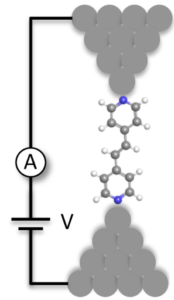 Can you envision minimizing
the elements of electronics down to the scale of single tiny molecules?
Researchers from physics, chemistry and meterials sciences have joined efforts
to fabricate, measure and understand so called molecular
junctions. Their electronic properties like the IV curve are entirely
governed by quantum effects, e.g. quantum interference and tunneling. The wealth
of experiments calls for developing applicable quantum transport theories. Read
more in our large review paper:
Can you envision minimizing
the elements of electronics down to the scale of single tiny molecules?
Researchers from physics, chemistry and meterials sciences have joined efforts
to fabricate, measure and understand so called molecular
junctions. Their electronic properties like the IV curve are entirely
governed by quantum effects, e.g. quantum interference and tunneling. The wealth
of experiments calls for developing applicable quantum transport theories. Read
more in our large review paper:
- F. Evers, R. Korytár, S. Tewari, J.
M. van Ruitenbeek,
Advances and challenges in single-molecule electron transport,
Reviews of Modern Physics 92, 035001 (2020)
Development of new methods and Machine Learning
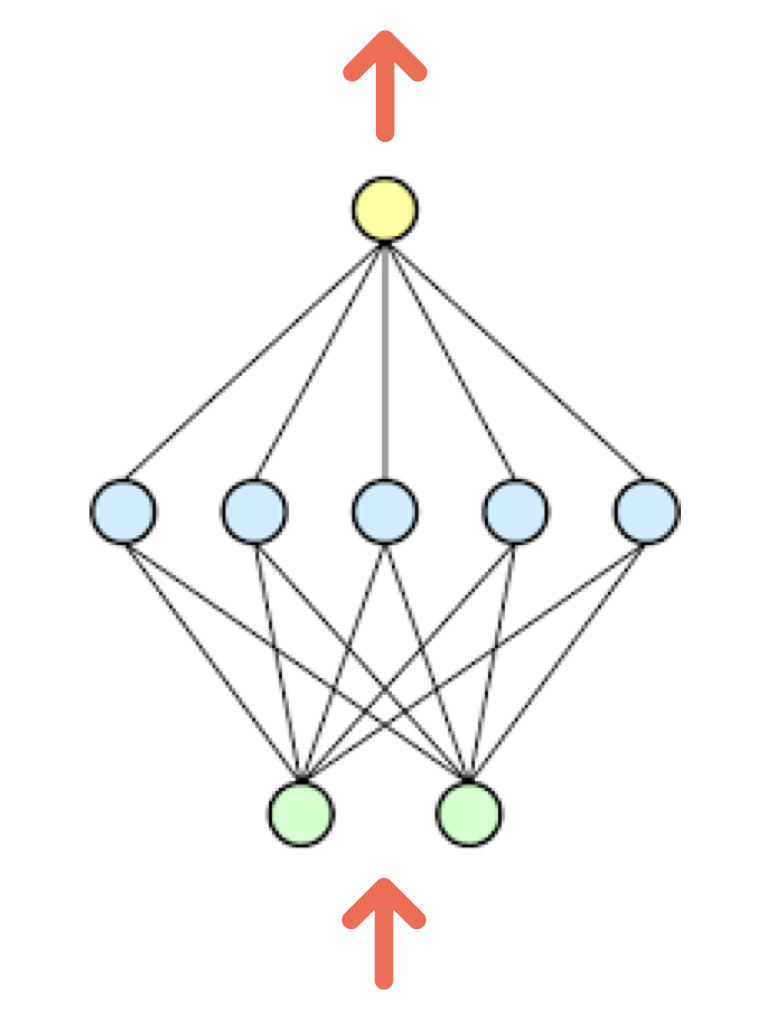 To study the problems of condensed
matter physics, we use both paper-and-pencil theory as well as numerical
calculations. For studying the basic physical features of materials with
atomistic input we use ab initio and multiscale
approaches. In recent years, we have adopted machine
learning for the investigation of complex condensed matter
systems.
To study the problems of condensed
matter physics, we use both paper-and-pencil theory as well as numerical
calculations. For studying the basic physical features of materials with
atomistic input we use ab initio and multiscale
approaches. In recent years, we have adopted machine
learning for the investigation of complex condensed matter
systems.
- J. Arnold, F. Schäfer, M. Žonda and A. U. J. Lode,
Interpretable and unsupervised phase classification,
Phys. Rev. Research 3, 033052, (2021)
Ultrafast physics
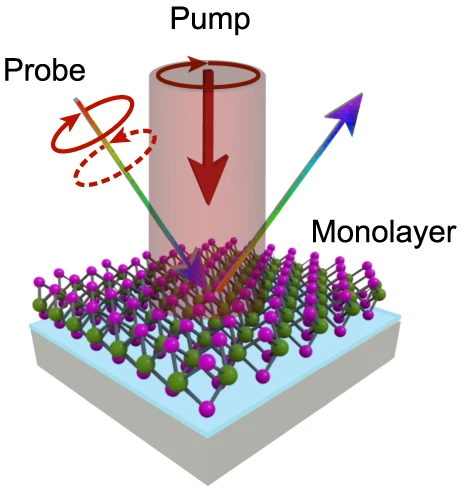 The progress in optics
allows nowadays to generate femtosecond laser pulses with wavelengths ranging
from the terahertz to the x-ray regime. Such pulses can record “movies” of
extremely fast processes in magnetic materials. Our department takes part in
this fascinating development theories by developing theories that predict and
interpret this novel phenomenology.
The progress in optics
allows nowadays to generate femtosecond laser pulses with wavelengths ranging
from the terahertz to the x-ray regime. Such pulses can record “movies” of
extremely fast processes in magnetic materials. Our department takes part in
this fascinating development theories by developing theories that predict and
interpret this novel phenomenology.
- Slobodeniuk, A. O., Koutenský,
P., Bartoš, M., Trojánek, F., Malý, P., Novotný, T., & Kozák, M.
Ultrafast valley-selective coherent optical manipulation with excitons in WSe2 and MoS2 monolayers
npj 2D Materials and Applications, 7(1), 17 (2023).
Computational design of new devices
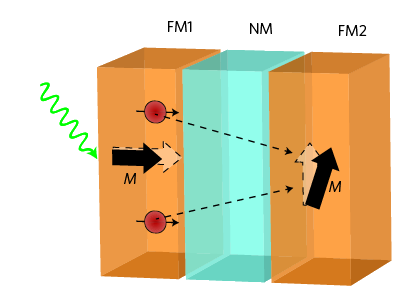 For novel technological
applications, we study magnetotransport through multilayer
structures consisting of alternating magnetic and non-magnetic layers.
These structures are well known for a possibility of manipulating their
magnetizations by means of spin transfer torque. The effect of
spin transfer torque can potentially control magnetic random access
memories.
For novel technological
applications, we study magnetotransport through multilayer
structures consisting of alternating magnetic and non-magnetic layers.
These structures are well known for a possibility of manipulating their
magnetizations by means of spin transfer torque. The effect of
spin transfer torque can potentially control magnetic random access
memories.
- Ritzmann, U., Baláž, P., Maldonado, P., Carva,
K., & Oppeneer, P. M.
High-frequency magnon excitation due to femtosecond spin-transfer torques.
Physical Review B, 101(17), 174427 (2020)

